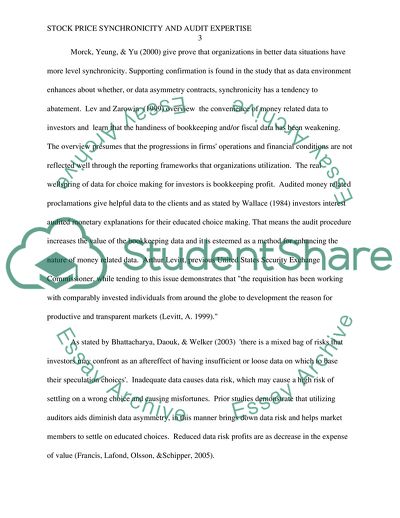Cite this document
(Stock price synchronicity and audit expertise (national, city and Thesis Proposal, n.d.)
Stock price synchronicity and audit expertise (national, city and Thesis Proposal. https://studentshare.org/finance-accounting/1822632-stock-price-synchronicity-and-audit-expertise-national-city-and-office-level
Stock price synchronicity and audit expertise (national, city and Thesis Proposal. https://studentshare.org/finance-accounting/1822632-stock-price-synchronicity-and-audit-expertise-national-city-and-office-level
(Stock Price Synchronicity and Audit Expertise (national, City and Thesis Proposal)
Stock Price Synchronicity and Audit Expertise (national, City and Thesis Proposal. https://studentshare.org/finance-accounting/1822632-stock-price-synchronicity-and-audit-expertise-national-city-and-office-level.
Stock Price Synchronicity and Audit Expertise (national, City and Thesis Proposal. https://studentshare.org/finance-accounting/1822632-stock-price-synchronicity-and-audit-expertise-national-city-and-office-level.
“Stock Price Synchronicity and Audit Expertise (national, City and Thesis Proposal”. https://studentshare.org/finance-accounting/1822632-stock-price-synchronicity-and-audit-expertise-national-city-and-office-level.


